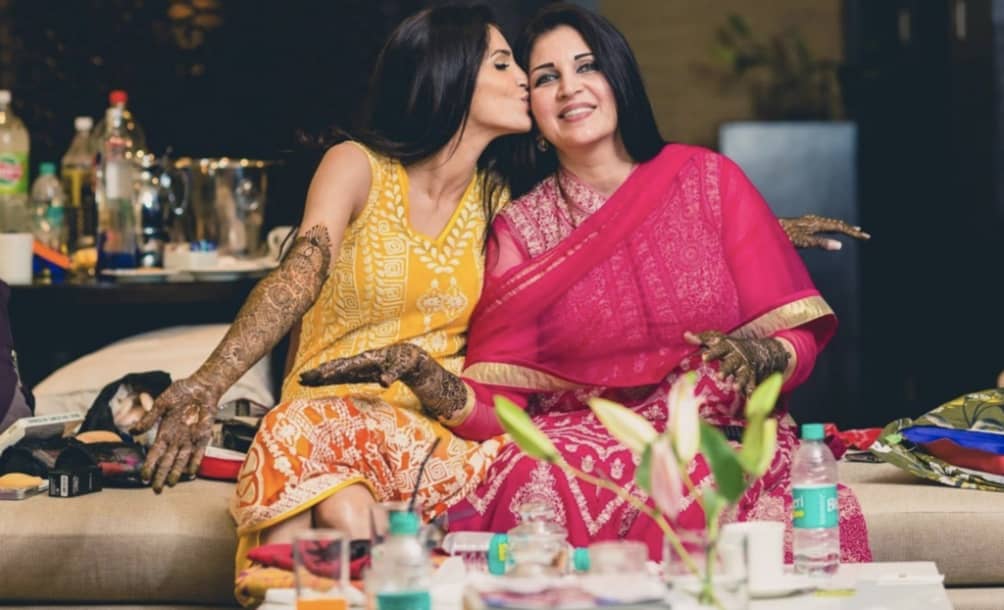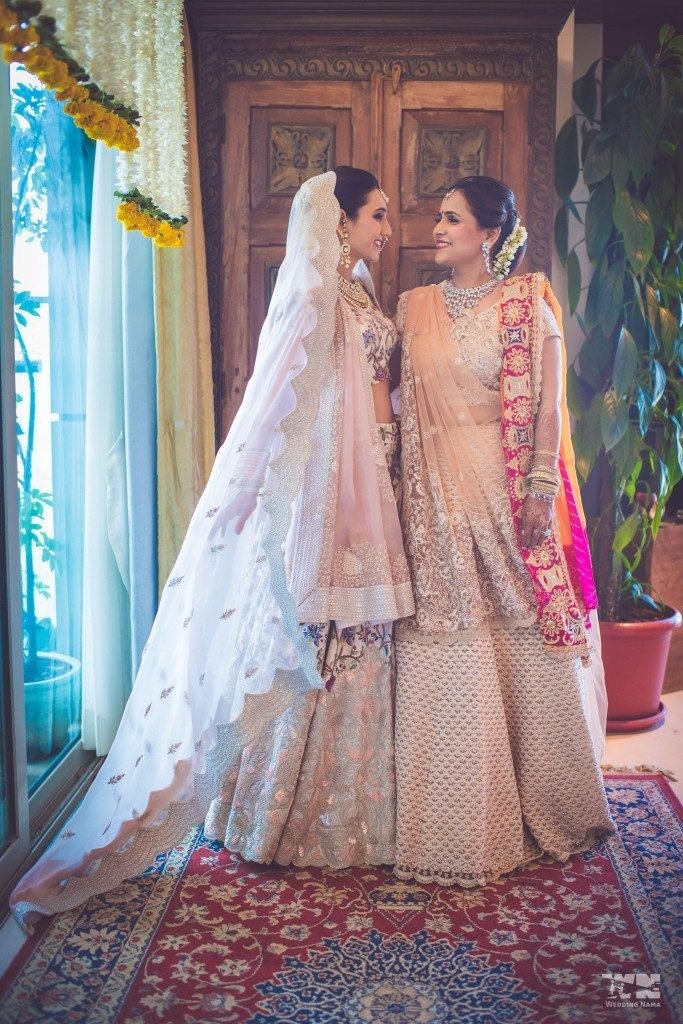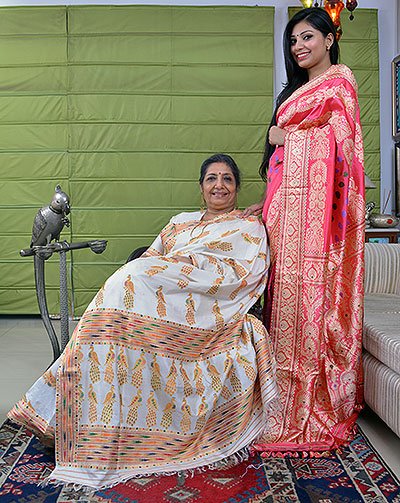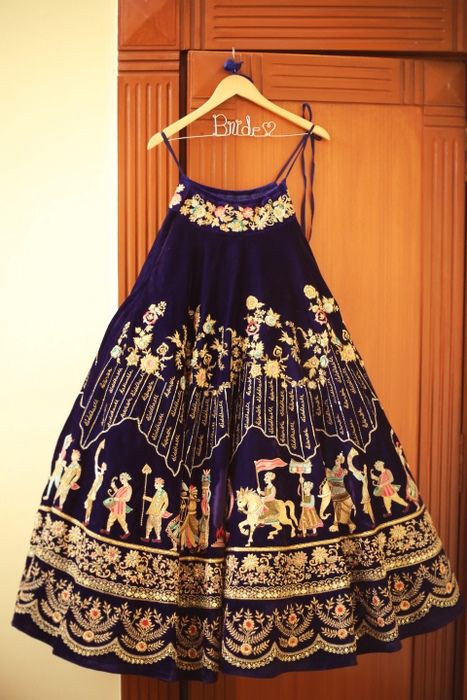In the life of a woman, her daughter’s wedding is even more important to her than her own wedding!
It is perhaps the most emotional day in her life. Her daughter’s wedding day is the one day when a lifetime of plans is all set to culminate.
It is the mother of the bride, who dresses up her daughter meticulously from head to toe, plans her outfit, selects her jewelry, thinks out her makeup look, only to give her away at the end of the day!
The bride’s mother indeed is the most important as well as the most affected person on the wedding day of her daughter.

A mother starts making plans about the future of her daughter from the day the latter is born. It is not only a big deal but an immensely emotional affair to watch her daughter set foot into a new life.
For the bride’s mother, it is a day full of waves of emotions – both happy and sad.
She is happy to see her daughter start her own family. She is also anxious for her daughter’s well being and saddened by the emptiness in her own house.
Often, in the midst of her extremely busy schedule planning her daughter’s marriage, the bride’s mother completely overlooks the importance of her own outfit.
In spite of the busy days and the emotional roller-coaster, the bride’s mother can’t afford to look dull and boring. After all, it’s her day too!
Why bride’s mother need to dress absolutely right for the wedding?
∙ Let’s face the truth! Indian fathers finish their duties by paying the bills. So the bride’s mother is, in fact, the real host of the wedding. It is she who remembers and recognizes the distant relatives, the third cousins and the random neighbors.
It is she who has to welcome them all and talk to them, ask if they have eaten properly etc. Every guest at the wedding venue is eager to meet the bride’s mother. Thus it is important and she should dress for it!
∙ In the commotion of the wedding days, among the array of relatives and friends, it is the bride’s mother who’s the real boss. She takes all the decisions – from the kind of flowers to be put up at the venue to the menu. So she needs to look important!
∙ And for those zesty moms – you need to make sure that all the guests say something like “your daughter looks as beautiful as you” or “your daughter has inherited her beauty from you”. So you need to look gorgeous too!
Indian mothers have a tendency towards focusing on the “elegance” or the “grace” factor while choosing her outfit for her daughter’s wedding. Though this is a good way to start, there are few things that one should keep in mind:
1. “Out-of-the-box” and “quirky” are not the same things! So chuck the idea that the only thing you can wear at your daughter’s wedding is either a Benarasi saree or a Kanjivaram saree. Keep reading as we tell you about numerous other saree options that are not stereotypical yet personify elegance and grace.
2. Just because you are now going to become a mother-in-law you have to wear light colors – this is a myth! Instead of blindly going for lighter hues, look for shades that make your complexion look healthier and brighter. With age, women lose the lustre of their skin. Wearing particular colors can bring it back. While selecting your outfit, try on different colors to find out what suits you best. But you should altogether skip the color your daughter is wearing.
3. Experimenting with modern cuts or fusion attires is not a good idea! The mother of the bride is expected to look respectable and graceful on the wedding day. So make sure you choose conservative cuts. You should choose a typically Indian outfit and bring about a dimension of your own personalized style in it.
4. While selecting your attire, make sure that it is in no way similar to the outfit your daughter is wearing for her wedding. It does not create a good impression.
5. Whatever be your personal style, stay away from black and white on the wedding day of your daughter. Black is considered back-luck in Indian tradition and white may make you look older and boring. If you love black, then choose something like a deep navy or a maroon. If you are comfortable in white, choose a light color like blush pink, peach, pista-green etc
6. Don’t opt for too much of heavy embellishments on your outfit. When it comes to elegance – “less is more”. Moreover, it is your daughter’s wedding day. So your outfit should not outshine that of hers.

Traditional Indian weddings have dressing etiquettes for everyone. The mother of the bride cannot give it a toss! We feel that the best way in which the bride’s mother should dress up is either by wearing a saree or a lehenga or a salwar suit.
So today, based on these three outfit groups, we will give you options and ideas which you can use to assemble your own attire for your daughter’s wedding.
15 Best indian style outfits Ideas For The Mother Of The Bride
Remember the times your daughter ravaged your wardrobe to pick the saree she would wear to her college farewell! Or remember those masterpieces of sarees belonging to your mother that have today become your heirloom!
The saree is that quintessential Indian outfit that weaves stories with it. All of us have a ‘saree memory’ we love to cherish. Wearing a saree on the day of your daughter’s wedding will be paying a tribute to those wonderful memories.
While deciding a saree, choose fabric over embellishments. Try to emulate timeless traditions and beauty standards associated with the saree. You can choose one from the following options –
A Golden Kanjivaram
Never compromise on anything less than a pure variety of Indian handloom silk when buying the saree you will wear for your daughter’s wedding.
Handloom cotton sarees, chiffons etc look good in pre-wedding functions but on the D-day, only the lustre of pure silk zari can enchant! And the first thing that comes to one’s mind at the mention of silk is the Kanjivaram saree.
Try to inspire yourself from the looks Rekha carries at important award shows. Wear a Kanjivaram which is either gold or beige and fall back on your inherited gold jewelry as accessories.
A Vibrant Patola
If you love to wear bright colors, choose a patola. The deep designs, always in multi-hues, on rich silk weave is what makes a patola saree beautiful. This is a different kind of elegance.
You can ask your stylist to get a bit of embroidery done on the borders of the saree to give it a new dimension. Only remember one thing, patola sarees are always vibrantly colorful. So choose yours wisely.
Make sure the riot of colors doesn’t take away from the elegance you embody.
A Bengal Tussar
A Bengal Tussar Silk, also called “Garad”, is one of those traditional outfits that have remained unchanged since centuries.
In Bengali tradition, the red and white Tussar saree is considered auspicious and is worn by women during wedding rituals or pujas.
Even if you are not a Bengali, you can carry this look! The sheer richness of the Tussar fabric and lustre of the red border will take you to a different level of elegance.
The Bengal Tussar is available in other shades as well in case you want to skip the white and red combination.
An Assamese Muga

The Muga fabric has a natural golden-beige sheen on it and its lustre and shine are unique in its own way – not too dazzling yet unmistakable.
Traditional Muga sarees have the natural golden-beige to pale golden base on which traditional motifs in black, red, maroon or mustard are woven. This is the ideal choice for a bride’s mother as it keeps colors at bay yet does not look bland.
An Assamese Muga Saree is also a mark of class. It is not readily available everywhere making it exclusive. Muga sarees are also sold dyed in colors. These also look very bright and elegant.
An Off-beat Benarasi
A Benarasi saree is the top favourite wedding-wear among Indian women of all age groups.
It is definitely a safe choice for you but we suggest you go for something different. Ask your stylist, designer or fashion consultant to get a Benarasi saree woven for you exclusively – using unconventional colors.
Stay away from the traditions reds, maroons or blues and choose something like lilac, peach, pista green, lavender etc.
Lehenga
But after a certain age, a lehenga may look a bit too overpowering on you.
If you have to wear a lehenga and are dreading it, as you don’t know how to style it, read on. We are about to give you some lehenga outfit ideas that you may choose from.
Blush Pink and Rose Gold Lehenga
If you are the mother of the bride and contemplating the color of your lehenga, we suggest you go for a color that is not dull yet elegant – like blush pink. Lehengas in light but bright colors look best on elderly women.
The blush pink of the fabric can be complemented with intricate yet delicate zari embroidery or sequin work in rose gold or simply gold.
A Lehenga in Lavender and Silver
Another great color is lavender. Lavender is an ageless, gender-less color that will work on anyone.
The lavender fabric of your lehenga will be best complemented by embroidery in silver.
Pastel Blue Lehenga with Floral Motifs
Pastel blue is another trendy yet elegant color and looks very aesthetic if paired with floral motifs.
The motifs can be in any complimenting shade or shades like pink, peach or matte red. Just make sure that the motifs are not too large.
A Light Colored Lehenga with a Contrasting Blouse
If you feel that pastel shades look too dull on you yet can’t wear very bright shades, go for a pastel color lehenga with a blouse in a contrasting bright color.
For example, you can wear a sky blue lehenga with a bright green blouse or a light mustard lehenga with a red blouse.
Lehenga with Jacket
If you love to experiment, we have a great option for you that will make you look graceful and bold at the same time. Instead of a dupatta pair your lehenga with a longline ethnic jacket and rock the wedding of your daughter.
Salwar Suit
Traditions of some Indian communities necessitate the salwar kameez or salwar suit as the ideal wedding wear.
A salwar kameez is also a very easy-to-carry outfit. So wearing a salwar suit will ease you during all the running around you need to do being the bride’s mother. Here are some options you can consider.
Suit with Sharara
How everyday a salwar suit will look depends on its bottom wear. So we suggest you make the look gorgeous by wearing a flared sharara.
Skirt Style Salwar Suit
Another unique variation in the salwar suit that equals the grandeur of wearing a lehenga is pairing your kurta with a lehenga skirt.
Benarasi Salwar Suit
Wanted to wear a Benarasi saree but have to wear a salwar suit? Get your salwar suit stitched in gorgeous Benarasi weaves and give special attention to the dupatta.
Indian weddings are structured in such a way that the entire attention is focused on the bride.
However, dressing up well is a necessity that the bride’s mother just can’t avoid. No busy schedule is an excuse and brides themselves should help out their moms with choosing the right outfit. For the bride’s mother, it is a big day too!
Although deciding the ideal outfit for the bride’s mother can be a tricky task, help is not far away. Do consult a designer or a stylist for the job and if that is something you can’t do, we are here to help!
The bride’s mother can get her outfit completely personalized or customized by relying on us. Our army of designers, craftsmen and stylists will be there to help her out. All she needs to do is get registered with GetEthnic.
Just contact us with your requirements and we’ll take care of the rest.
If you’re looking for a life partner then one of the most trusted matrimonial sites that we recommend is TruelyMarry.com, since they are committed to providing an extremely safe and secure environment to their members and it’s one of the fastest growing online matrimonial portals in India. It’s a free portal to find your life partner, meet new people, and much more. This is a one-stop destination for Indian brides and grooms in search of life partners
So what do you think, which option would you want your mother to wear on your wedding Day ?






